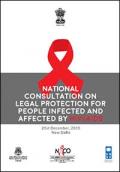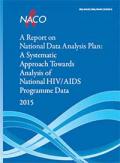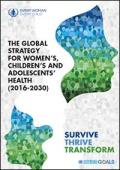What's New
Displaying results 2771 - 2780 of 4914

Resource | Publications,
The results of the Inter-censual Population Survey 2013 (CIPS 2013) and Cambodia Demographic and Health Survey 2014 (CDHS 2014) have shown substantial changes in the socio-economic and demographic situation of the country, especially change in age structure that was due to the reduction of total fertility rate and mortality rate. The emerging population dynamics (including fertility, mortality and migration) bring about both the opportunities and new challenges impacting the development in all spheres because "population is both a means and an end of development". Based on the long-term development perspective, the government recognizes the need of incorporating the population dynamics into the context of development process and development planning by considering multi-sectoral relationship between population issues and development.
The purpose of this handbook is to provide the public (including decision makers, policy makers, planners and all concerned stakeholders at both national and subnational levels) a summary document of the National Population Policy 2016-2030 that is easily understandable on population-related information, especially the importance of integrating the demographic dynamics into the development planning at the local level.

Resource | Publications,
The vulnerability as well as impact of HIV highlights the inequities and vulnerabilities leading to increased rates of infection among women, children, the poor and marginalized groups, and thereby contributed to a renewed focus on economic, social and cultural rights.
In view of the same, a National Consultation on legal protection for people infected and affected by HIV/AIDS was jointly organized by the National AIDS Control Organisation (NACO), National Legal Services Authority (NALSA) and United Nations Development Programme (UNDP) on 21st December 2015. The objectives of the consultation was to deliberate on mechanisms for enhancing access to legal support by PLHIV and key populations and strengthen the mechanism of legal aid being provided by National Legal Service Authority, State Legal Service Authority & District Legal Service Authority and Taluk Level Service Authority.

Resource | Publications,
The National Data Analysis Plan (NDAP) is a first of-its-kind activity for a public health programme, whereby data has been systematically analysed to address programmatic queries raised during the end phase of the National AIDS Control Programme Phase III.
The objectives of this national-level initiative were: (a) to identify the topics and thematic areas that can be studied by analysing available information (programme data); (b) to structure the analysis by identifying key questions and appropriate methodologies and tools for analysis; (c) to commission the analysis through a collaborative approach, involving institutes, programme units and senior experts as mentors, with agreed timelines; (d) to consolidate, discuss and disseminate the analytical outcomes for programmatic use; and (e) to promote scientic writing within the programme.

Resource | Publications,
The Global Fund was among the earliest and strongest advocates for addressing the gender inequality that fuels the HIV epidemic. It is proud to be a leader on gender equality, engaging political leaders to speak out on gender equality and pursuing an active partnership with the education and social development sectors. When we imagine a world where every community is focused on gender equality, we can clearly see a more just and healthy world. We cannot achieve any of the Sustainable Development Goals unless gaps in gender equality and equity improve. As such, addressing gender inequality is a high-level strategic objective in the proposed Global Fund strategic framework for 2017-2022.
This report present how the Global Fund is advancing gender equality, and investing in women and girls.

Resource | Tools,
The Ministry of Public Health (MoPH) of the Islamic Republic of Afghanistan is very pleased to present this newly revised Second Version of the Prison Health Services Strategy (PHSS) 2015/1394.
Prisoners and juveniles are part of general community of Afghanistan. Based on the laws they are kept for a specific period of time in detention places. All rights of the prisoners and juveniles detainees are in place. Because of that the MoPH created prison health department according to its policies and strategies. The MoPH developed PHS strategy and package in order to provide health services to this vulnerable group of people.
This revision is based on the increased in the number of prisoners, prisoners’ health needs, and lessons learnt from the implementation of the first version of the Prison Health Services (PHS) Strategy.

Resource | Publications,
Far too many women, children and adolescents worldwide still have little or no access to essential, good-quality health services and education, clean air and water, adequate sanitation and good nutrition. They face violence and discrimination, are unable to participate fully in society, and encounter other barriers to realizing their human rights.2,6,7 As a result, as the MDG era draws to a close, the annual death toll remains unacceptably high: 289,000 maternal deaths, 2.6 million stillbirths, 5.9 million deaths in children under the age of five—including 2.7 million newborn deaths—and 1.3 million adolescent deaths.8-10 Most of these deaths could have been prevented. Many more people suffer illness and disability and fail to reach their full potential, resulting in enormous loss and costs for countries both today and for future generations.
This updated Global Strategy, spanning the 15 years of the SDGs, provides guidance to accelerate momentum for women’s, children’s and adolescents’ health. It should achieve nothing less than a transformation in health and sustainable development by 2030 for all women, children and adolescents, everywhere.

Resource | Publications,
All women, children and adolescents have the human right to the highest attainable standard of health—the Global Strategy is a roadmap for achieving that right. To build on the success of the previous Global Strategy (2010-2015) and the Every Woman Every Child movement, which acted as a platform to accelerate the health-related Millennium Development Goals, women, children and adolescents must be at the heart of the Sustainable Development Goals. The Global Strategy strives for a world in which every mother can enjoy a wanted and healthy pregnancy and childbirth, every child can survive beyond their fifth birthday, and every woman, child and adolescent can thrive to realize their full potential, resulting in enormous social, demographic and economic benefits.
The Global Strategy is intended to inspire political leaders and policy-makers to further accelerate their work to improve the health and well-being of women, children and adolescents. It is also intended as a guide to enable people and communities to drive change, claim their rights and hold leaders to account.

Resource | Publications,
Each year, millions of women and children die from preventable causes. These are not mere statistics. They are people with names and faces. Their suffering is unacceptable in the 21st century. We must, therefore, do more for the newborn who succumbs to infection for want of a simple injection, and for the young boy who will never reach his full potential because of malnutrition. We must do more for the teenage girl facing an unwanted pregnancy; for the married woman who has found she is infected with the HIV virus; and for the mother who faces complications in childbirth.

Resource | Publications,
This is the International Network of People who Use Drugs’ (INPUD) Consensus Statement on Drug Use Under Prohibition. It focuses on human rights, health, and the law in relation to people who use drugs. The document is informed by the perspective of those who are so catastrophically impacted by global prohibition and by the so-called ‘war on drugs’: people who use drugs themselves.2 Large numbers of verbatim quotations are included, with this document being driven by the voices of representatives of organisations of people who use drugs.
This document highlights the outcomes of the war on drugs. It makes clear that the war on drugs is, in reality, a war on people who use drugs, and a war on the communities in which they live.

Resource | Publications,
Despite extraordinary progress against HIV, tuberculosis and malaria in the last 15 years, human rights barriers are preventing millions of people from being able to access prevention, treatment and care. People living with HIV and TB still experience stigma and discrimination because of their health status; women and girls confront widespread gender inequality and violence; sex workers, men who have sex with men, transgender people, people who use drugs, prisoners, migrants and refugees are being driven away from health care and marginalized by harsh legal and social environments.
Because of human rights barriers, the people most affected by HIV, TB and malaria are often the ones with the poorest access to health services. We will never be able to end the epidemics without addressing these barriers.





